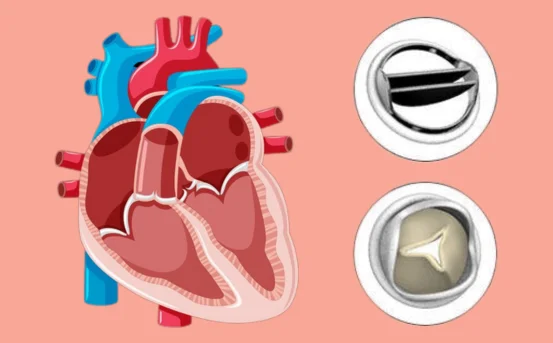Balloon valvuloplasty surgery procedure is a minimally invasive intervention designed to improve blood flow through narrowed heart valves. Primarily used for treating valvular stenosis, this procedure is an alternative to open-heart surgery in select patients, especially those with mitral, aortic, or pulmonary valve stenosis. With advancements in interventional cardiology, balloon valvuloplasty has emerged as a life-enhancing technique that offers quicker recovery and reduced complications for eligible candidates.
Understanding Valvular Stenosis
Before diving into the balloon valvuloplasty procedure, it’s important to understand valvular stenosis. The human heart has four valves mitral, aortic, tricuspid, and pulmonary that ensure unidirectional blood flow. When any of these valves become narrowed due to congenital defects, infection (like rheumatic fever), age-related calcification, or other conditions, the heart must work harder to pump blood.
This narrowing is referred to as stenosis, and if left untreated, it can lead to severe complications such as heart failure, arrhythmias, stroke, and even death. That’s where balloon valvuloplasty plays a critical role.
What is Balloon Valvuloplasty Surgery?
Balloon valvuloplasty also known as balloon valvotomy is a catheter-based procedure that uses a balloon-tipped catheter to widen a narrowed heart valve. It’s typically performed in a cardiac catheterization lab under local anesthesia and light sedation.
Unlike traditional valve replacement surgery, which may require opening the chest, balloon valvuloplasty is less invasive and is often used in pediatric patients, older adults, or those who may not be suitable for surgery due to comorbidities.
When is Balloon Valvuloplasty Recommended?
Balloon valvuloplasty is commonly recommended in the following cases:
- Mitral valve stenosis, particularly caused by rheumatic heart disease.
- Pulmonary valve stenosis, especially in infants and children.
- Selected cases of aortic valve stenosis in non-surgical candidates.
- Congenital heart defects involving valve narrowing.
- Temporary symptom relief in patients awaiting valve replacement.
A thorough evaluation, including echocardiography, cardiac catheterization, and imaging studies, is conducted before the procedure to assess suitability.
Pre-Procedure Preparation
Prior to the balloon valvuloplasty surgery procedure, patients undergo several pre-operative steps:
- Blood tests to evaluate clotting factors, kidney function, and other parameters.
- Electrocardiogram (ECG) and chest X-ray to assess heart rhythm and size.
- Echocardiogram to determine the degree of stenosis and valve structure.
- Fasting for 6–8 hours before the procedure.
- Stopping certain medications like blood thinners under medical supervision.
The healthcare team explains the procedure, obtains consent, and monitors the patient’s vitals throughout.
Step-by-Step Procedure of Balloon Valvuloplasty
Here’s a detailed overview of how balloon valvuloplasty is performed:
- Accessing the Artery or Vein :- The cardiologist inserts a catheter a thin, flexible tube through a blood vessel, usually in the groin (femoral artery or vein). In pediatric cases or pulmonary stenosis, the jugular vein may be used.
- Guiding to the Heart :- Using fluoroscopy (real-time X-ray imaging), the catheter is gently guided toward the narrowed valve.
- Positioning the Balloon :- Once positioned, a balloon-tipped catheter is threaded through the narrowed valve. The balloon is carefully inflated to stretch open the valve leaflets, breaking the calcified or fused tissues.
- Balloon Deflation and Removal :- After widening the valve, the balloon is deflated and removed. The valve remains open, allowing improved blood flow.
- Monitoring :- The patient is observed for a few hours to ensure there are no immediate complications like bleeding or arrhythmias.
The entire procedure typically takes 1 to 2 hours, and most patients are discharged within 24 to 48 hours.
Benefits of Balloon Valvuloplasty Surgery
The balloon valvuloplasty surgery procedure offers several advantages over traditional surgery, particularly for high-risk patients:
- Minimally invasive with no large incisions
- Reduced hospital stay and faster recovery
- Effective symptom relief such as reduced shortness of breath, fatigue, and chest pain
- Less postoperative discomfort
- Improved quality of life, especially in children and elderly patients
- Can be repeated or used as a bridge to valve replacement
For children with congenital valve stenosis, it often provides long-term relief and delays the need for surgery.
Recovery and Post-Procedure Care
After the procedure, patients are kept under observation to monitor vital signs, bleeding, or any adverse reactions. Postoperative care includes:
- Bed rest for a few hours
- Gradual resumption of activities within 1–2 days
- Follow-up echocardiogram to assess valve function
- Avoiding strenuous activities for a week
- Resuming medications as advised
Regular checkups are essential to monitor valve performance, especially in cases of restenosis (re-narrowing).
Potential Risks and Complications
Though considered safe, balloon valvuloplasty does carry some risks, particularly in elderly or high-risk patients:
- Valve leakage (regurgitation) due to overstretching
- Blood vessel damage
- Blood clots or stroke
- Infection at the catheter site
- Heart rhythm disturbances (arrhythmias)
- Rarely, emergency surgery may be required
Choosing an experienced interventional cardiologist and a well-equipped facility significantly reduces the risk of complications.
Who Should Not Undergo Balloon Valvuloplasty?
This procedure may not be suitable in the following scenarios:
- Severely calcified valves, especially the aortic valve
- Combined valve and coronary artery disease
- Significant valve regurgitation
- Active infections or blood clotting disorders
- Structural abnormalities not amenable to balloon dilation
Alternative treatments like surgical valve replacement or transcatheter aortic valve replacement (TAVR) may be recommended.
Conclusion
The balloon valvuloplasty surgery procedure is a vital advancement in cardiology, offering a less invasive yet effective solution for managing selected cases of valve stenosis. It enhances the lives of countless patients especially children with congenital heart disease and older adults who may not tolerate open-heart surgery.
With proper patient selection, skilled execution, and post-operative care, balloon valvuloplasty serves as a bridge between symptom relief and long-term heart valve management. As technology continues to evolve, this procedure will remain a cornerstone of interventional heart care, bringing hope to those living with valvular heart disease.























